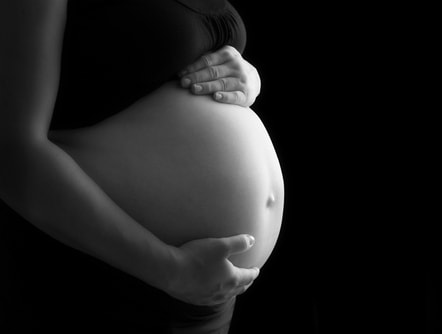
Taking care of you during Pregnancy
Pregnancy Care (Including Turning Breech and Induction)
Whichever trimester you are in, acupuncture can help.
Acupuncture can be used to assist with a range of pregnancy related conditions as an alternative to taking medication:
- General pregnancy care
- Habitual Miscarriage
- Threatened Miscarriage
- Nausea and vomiting (Morning Sickness)
- Fatigue and exhaustion
- Back pain, sciatica, pelvic and hip pain
- Anxiety and Depression
- Itching
- Hypertension disorders
- Headaches and Migraines
- Constipation and Haemorroids
- Gestational carpel tunnel syndrome
- Breech position
- Pre-birth acupuncture to prepare the body for labour
- Over-term babies
- Postpartum recovery
Musculoskeletal Pain
Musculoskeletal conditions are often experienced during pregnancy, and acupuncture is often an affective treatment.
- Backache
- Sciatica
- Rib pain
- Hip pain
- Pelvic pain
- Carpel Tunnel Syndrome
Morning Sickness
If your sickness is prolonged and you are unable to eat, acupuncture can be very effective.
- Morning sickness affects 50-80% of pregnant women.
- Nausea and vomiting typically begins between weeks 4 and 6 of gestation.
- 60% of affected women are better by week 4.
- 90% are better by week 16.
- In a small number of cases it may persist through the entire pregnancy.
Habitual Miscarriage
About 30% of pregnancies end in miscarriage.
Acupuncture pre-conceptual care should include treatment to offset any weaknesses that a woman might have that might lead to miscarriage, especially if they have experienced one already.
Habitual miscarriage or recurrent spontaneous miscarriage (RSM) is a diagnostic label used when three or more consecutive miscarriages have occurred.
The causes of habitual miscarriage are largely unclear but may include:
• Maldevelopment of the foetus
• Luteal phase defective
• Blood-clotting disorders
• Thyroid disorders
• Endochrine disorders
• Immunological reactions
• Anti-nuclear antibodies
• Uterine problems (including endometriosis or fibroids)
• Incomplete cervix
• Maternal disease
• Stress and anxiety
For those women who have had previous miscarriages, receiving TCM treatment to prepare the body is just as important as treatment during pregnancy itself. Ideally treatment should start 3 months prior to conception. If possible, a woman should not try to get pregnant for between 6 months to one year after a miscarriage. TCM sees a miscarriage as hugely draining and the woman’s body needs time to recover before attempting another pregnancy.
Anxiety and Depression
Around 15% of pregnant women suffer from anxiety, and around 20% suffer from some form of depression. Elevated distress and depression scores are associated with more negative pregnancy outcomes, such as preterm labour, delivery complications, low birth weight, and poor maternal-foetal attachment.
A substantial proportion of women who are depressed during pregnancy continue to be depressed during the postpartum period, affecting not only the mother but also the infant. Depressed pregnant women are rightly reluctant to take antidepressant medications.
Insomnia can complicate anxiety. Reasons why women experience insomnia in preganancy may be due to nausea or increased urination, or even a history of insomnia pre-pregnancy. Women with persistent insomnia may have previously been self-medicating with alcohol, herbal remedies or medication, but will of course want to avoid these in pregnancy.
Pre-eclampsia
Pregnancy induced Hypertension (PIH) or pre-eclampsia refers to elevated blood pressure during pregnancy. It occurs in over 5% of pregnant women in the UK. PIH is closely monitored since if it is left untreated there is a potential for eclampsia to develop, a serious condition with maternal convulsions and the possibility of maternal and foetal death. However, eclampsia is now extremely rare due to antenatal care. Women entering pregnancy with pre-existing high blood pressure will be closely monitored.
Acupuncture can be given as a support to regular medical intervention, but not as an alternative.
Turning a Breech
The optimum time to turn a breech with Moxabustion is around week 34, this is before the baby has grown too large.
Nearly 50% of breech babies turn spontaneously by week 36, so midwives and doctors often wait until week 36 before discussing options. In clinical practice it is best to begin treatment as near to week 34 as possible, although it is still worth trying up to week 39.
Pre-birth acupuncture
In the final weeks of pregnancy new discomforts often appear, such as heartburn, constipation, varicose veins, leg cramps, feet and hand swelling, insomnia, anxiety and tiredness. Women may also experience frequent urination as the baby presses on the bladder. Research has shown that acupuncture during this time can shorten the duration of labour in first time mothers by 25%.
Induction
When?
If it is seen as necessary by a woman’s midwife or doctor to medically induce labour, the use of acupuncture can be commenced three days prior to the medical induction. The aim of the acupuncture is to help establish contractions and promote cervical dilation. Even if labour does not commence spontaneously, feedback from midwives suggest that a woman’s cervix is more favourable following acupuncture/acupressure and that there is an increased chance of a woman progressing through the induction with minimal intervention.

